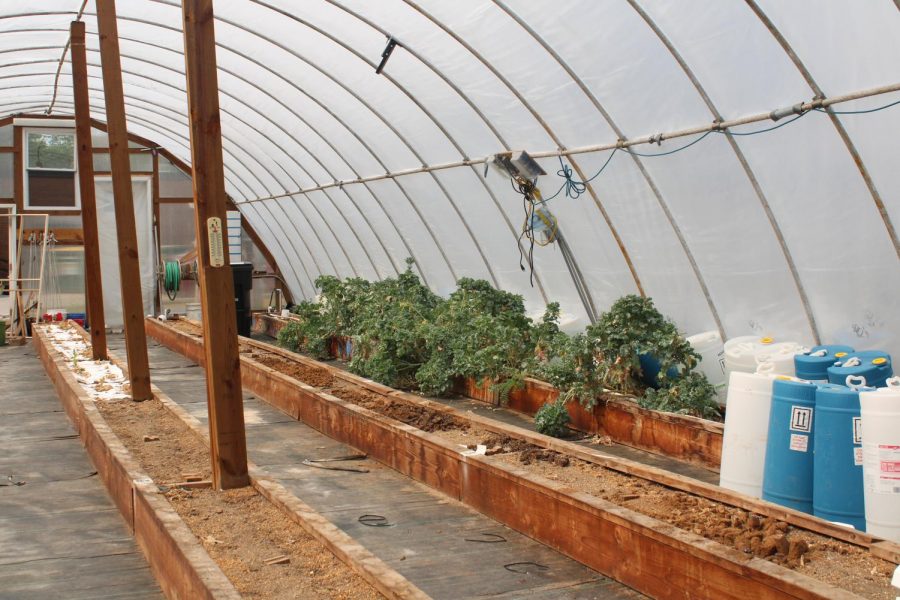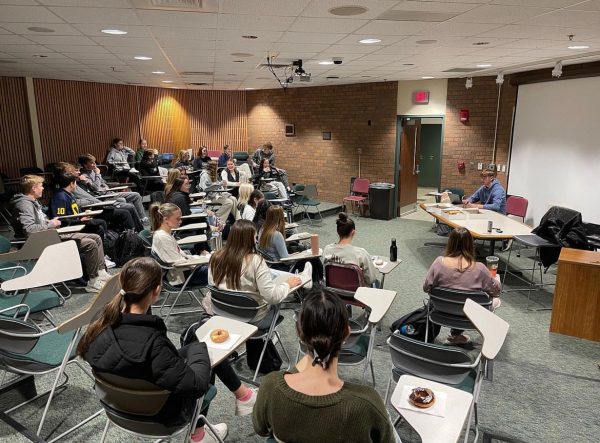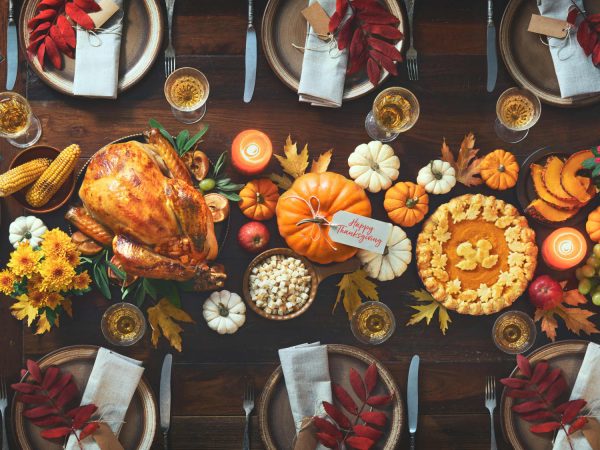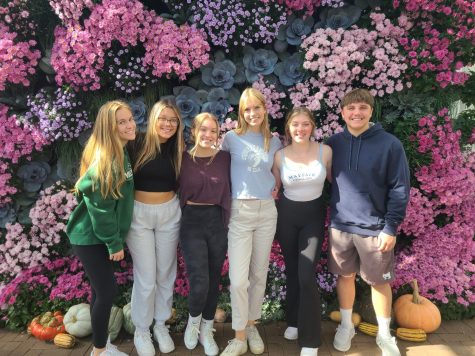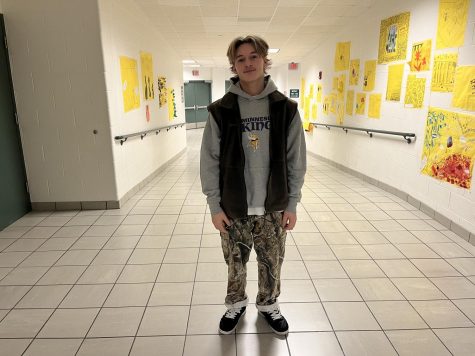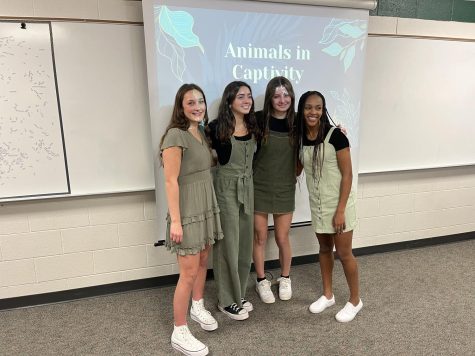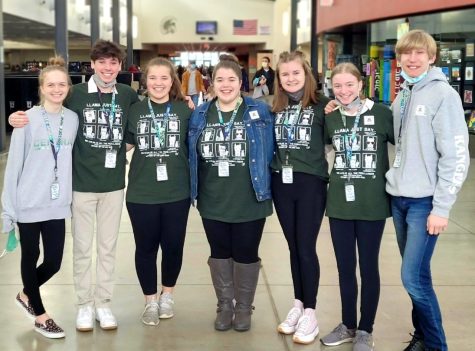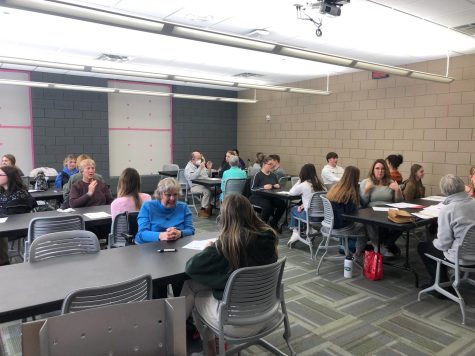The greenhouse is flourishing into a new school year, one with fresh meaning and purpose
A peak inside the greenhouse, where students are currently growing kale.
Senior Rachel Marco would be the first to admit that, out of all her interests, she is first and foremost a big plant lover.
From her early education at Goodwillie Environmental School to her many hiking, backpacking, and white water kayaking expeditions within the last few years, she finds a particular sort of solace in the natural world. And—as the new school year begins and her last two semesters at FHC commence—Rachel is bringing this adoration for the outdoors into FHC with her participation in the greenhouse independent study.
For those who’ve never delved into the cosmos of cultivation, the greenhouse rests next to the art wing and for approximately six years has been providing students with a space to grow produce. Holding in heat and sunshine, the atmosphere within the nursery allows seedlings to sprout during the entire year, making space for an advanced, hands-on method of study that Rachel has been taking part in.
“I’ve always been really into Environmental Science, and Mr. Scholten knew that, so he asked me if I’d take the class,” Rachel said. “Just because I’ve always been interested in [the subject], I thought it would be really interesting for me to do because then I can grow that knowledge.”
For the past few weeks, Rachel and the other greenhouse members have been pruning and planting kale, the crop grown by last year’s student botanists. However, with an expansive yet simultaneously narrow field of possibilities, Rachel hopes to soon stray away from the realm of lettuce into a world of ulterior harvests.
“We’re limited in what we can grow; because it’s a greenhouse, you don’t have pollinators,” Rachel explained. “Right now, we have a pretty short growing period because we have to take into account that the plants are going to have minimal sunlight in the winter. So we’re doing lettuce, but then in the spring, I’ll have a lot more freedom in what I want to grow, and I kind of want to try carrots.”
Through experimentation and the process of elimination, Rachel is hoping that her time in the greenhouse will not only fill her schedule but will lead her down her future career path. With an ambition to work in the field of organics, she has been slowly narrowing down her options throughout the last few months. Her application for the independent study is another step on the journey.
Yet, above all else, Rachel funds into the future of farming technology and wants not only to learn more about its intricacies, but educate others on it as well.
“I want to learn how to grow plants, but I want to learn how to do it in a non-traditional way,” Rachel said. “A greenhouse is much different than just putting a seed in the ground. I want to learn more about the alternative way of farming because, in the future, alternative farming is going to be huge.”
Yet, before Rachel can even arrive at the greenhouse for her daily check-in, senior Kenzie Davis is already on the scene caring for their kale. During fourth hour, she can either be found watering and nurturing the plants within the conservatory or roaming the halls with bundles of produce in tow, offering it out to any teacher who so desires.
You can still do this. You’re not farming for yourself like we did in the old days, but it’s still fun to farm and be outside and connect with nature.
— Kenzie Davis
Like her fellow environmentalists, Kenzie immersed herself within the greenhouse project in search of a future career. However, the serenity that the class provides is something she has slowly fallen in love with.
“I like the freedom a lot,” Kenzie said. “It’s really nice to be able to go outside during your day and have that break where you’re not sitting down in a classroom. You’re just by yourself, and it’s nice.”
After what can only be described as a hectic school year, the peace of spending time alone with nature is something anyone would pay to experience. However, under the umbrella of this alone-time, Kenzie has picked up on other noticeable benefits of separating herself from the world, even if only for 60 minutes.
Unlike the learning methods we’ve all fallen into the habit of using, the study of horticulture is almost completely absent of technology, a perk that Kenzie didn’t quite realize until starting this course.
“I think we get so caught up in our everyday lives, and especially with technology these days, everyone’s on their phone,” Kenzie said. “So I think the greenhouse is a really good thing for people to see. You can still do this. You’re not farming for yourself like we did in the old days, but it’s still fun to farm and be outside and connect with nature.”
And this—the separation from modern life to focus on modern farming—is exactly why AP Environmental Science teacher Chad Scholten continues to offer the greenhouse to his students. After years of ups and downs, whether in the building of the nursery or the preservation of its purpose, Scholten maintains the hope that pupils can gain insight into the impact their food consumption has.
“We always kind of come back to our food choices and the fact that you choose what you eat every single day,” Scholten said. “Maybe you don’t choose the groceries because your parents are still doing that, but for seniors, and then juniors who are going to be seniors, then be off to college, they have an option. I choose to focus on food because we all have that option.”
No matter what draws individuals to the greenhouse, it is a project that extends its roots into the real world and allows students to experience the impact they can have on the environment. From the exploration of a future career to the simple enjoyment of the art of agriculture, the greenhouse is a quiet beat within the heart of FHC that cannot be avoided.
Yet, most of all, the greenhouse is a project that turns little triumphs, such as growing a successful fruit or vegetable, into so much more.
“I enjoy seeing the growth or the connection the students have,” Scholten said. “As I mentioned before, like the connection to food, when we have sugar snap peas, I’ll take my class down there, and I just let them eat them right off the vine. So many of the students say these are the best sugar snap peas they’ve ever eaten.”
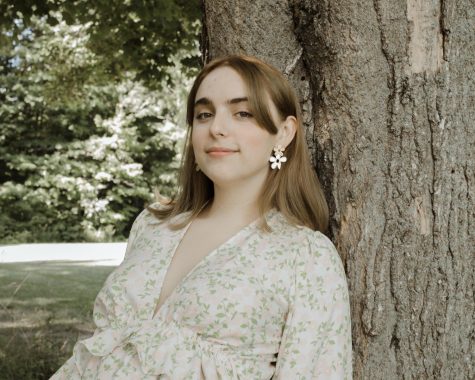
Jessie Warren is a senior, and this will be her second and final year as a staff member of The Central Trend. Ever eager to write, she finds a sort of...





















































































